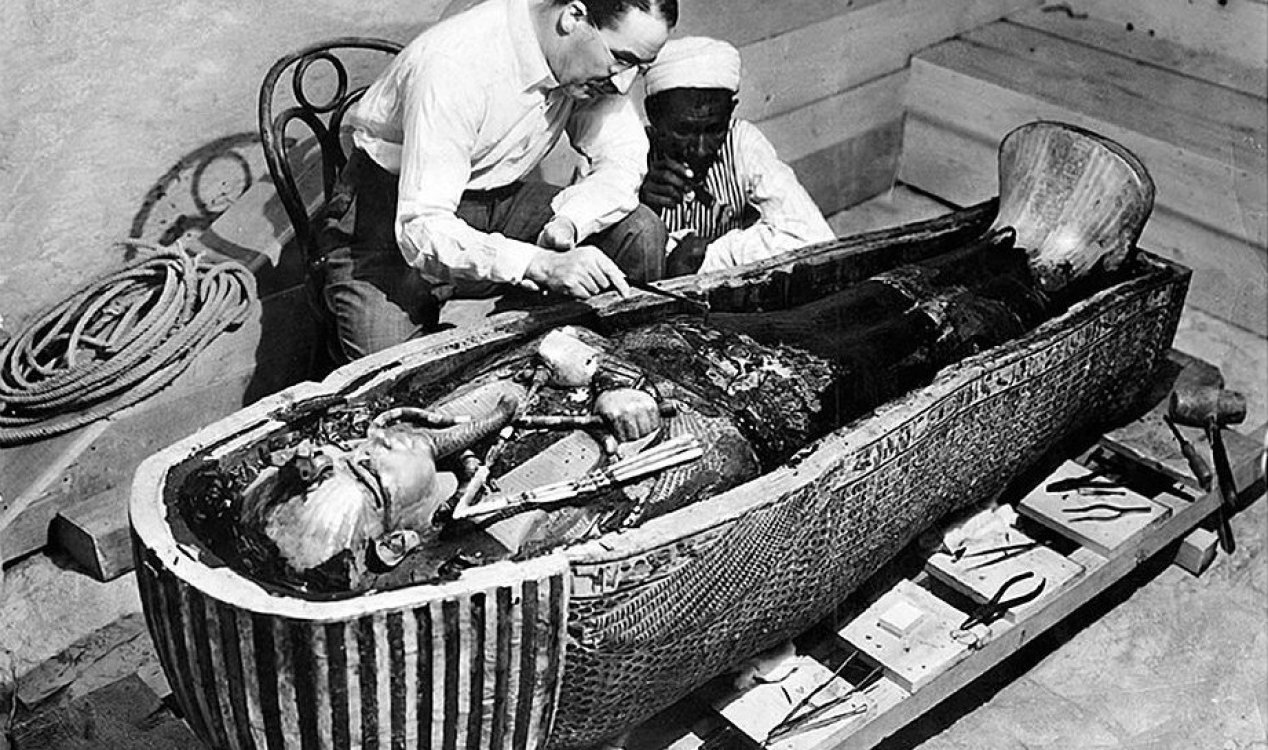Archaeology & History
April 27, 2024 · 4 comments
4 comments

Howard Carter examining King Tut's sarcophagus. Image Credit: The New York Times 1925
Unlike most Egyptian tombs which had been looted long ago, this one had remained untouched since antiquity - providing a unique look at the full extent and splendor of the Boy King's burial.
But while there was much to celebrate about the discovery, rumors began to circulate of a Pharaoh's curse after multiple members of the excavation team later died before their time.
These included Howard Carter himself, who died of a heart attack in 1939 after suffering from Hodgkin's lymphoma, while Lord Carnarvon - who walked through the treasure rooms - died a mere five months later from blood poisoning.
This trend would continue for some time, with dozens of people involved in the excavation dropping dead from all manner of causes ranging from strokes and heart attacks to pneumonia and asphyxia.
But could there really have been a literal 'curse' at work ?
Now according to a new study headed by up Ross Fellowes, there may in fact be a conventional explanation for the phenomenon and it is all to do with excessive radiation exposure.
It turns out that some Egyptian tombs actually contain radioactive and hazardous elements that have the potential to prove highly damaging to human health given enough time and exposure.
Those who worked within King Tut's tomb likely received a heavy dose.
Evidence of radioactivity has been found in other tombs as well, but this has typically been put down to the natural background radiation in the rock.
"Reported strong radiation (as radon) in tomb ruins has been loosely attributed to the natural background from the parent bedrock," Fellowes wrote.
"However, the levels are unusually high and localized, which is not consistent with the characteristics of the limestone bedrock but implies some other unnatural source(s)."
Source: Mail Online | Comments (4)
Has the mystery of the King Tut 'Pharaoh's curse' finally been solved?
By T.K. RandallApril 27, 2024 ·
 4 comments
4 comments
Howard Carter examining King Tut's sarcophagus. Image Credit: The New York Times 1925
More than 20 people who excavated King Tutankhamun's tomb in the 1920s later died young from a range of maladies.
The discovery of the perfectly preserved tomb of King Tutankhamun in 1922 by Howard Carter was (and still remains) one of the most important archaeological finds in history.Unlike most Egyptian tombs which had been looted long ago, this one had remained untouched since antiquity - providing a unique look at the full extent and splendor of the Boy King's burial.
But while there was much to celebrate about the discovery, rumors began to circulate of a Pharaoh's curse after multiple members of the excavation team later died before their time.
These included Howard Carter himself, who died of a heart attack in 1939 after suffering from Hodgkin's lymphoma, while Lord Carnarvon - who walked through the treasure rooms - died a mere five months later from blood poisoning.
This trend would continue for some time, with dozens of people involved in the excavation dropping dead from all manner of causes ranging from strokes and heart attacks to pneumonia and asphyxia.
But could there really have been a literal 'curse' at work ?
It turns out that some Egyptian tombs actually contain radioactive and hazardous elements that have the potential to prove highly damaging to human health given enough time and exposure.
Those who worked within King Tut's tomb likely received a heavy dose.
Evidence of radioactivity has been found in other tombs as well, but this has typically been put down to the natural background radiation in the rock.
"Reported strong radiation (as radon) in tomb ruins has been loosely attributed to the natural background from the parent bedrock," Fellowes wrote.
"However, the levels are unusually high and localized, which is not consistent with the characteristics of the limestone bedrock but implies some other unnatural source(s)."
Source: Mail Online | Comments (4)

The Unexplained Mysteries
Book of Weird News
AVAILABLE NOW
Take a walk on the weird side with this compilation of some of the weirdest stories ever to grace the pages of a newspaper.
Click here to learn more

Support us on Patreon
BONUS CONTENTFor less than the cost of a cup of coffee, you can gain access to a wide range of exclusive perks including our popular 'Lost Ghost Stories' series.
Click here to learn more
Ancient Mysteries and Alternative History
Israel, Palestine and the Middle-East
United States and the Americas
Russia and the War in Ukraine
Total Posts: 7,767,925 Topics: 325,002 Members: 203,755
Not a member yet ? Click here to join - registration is free and only takes a moment!
Not a member yet ? Click here to join - registration is free and only takes a moment!


































Please Login or Register to post a comment.